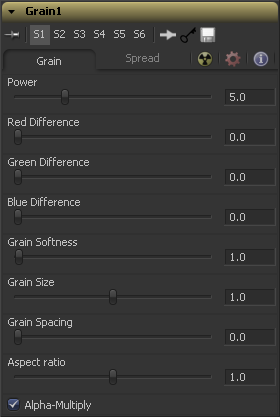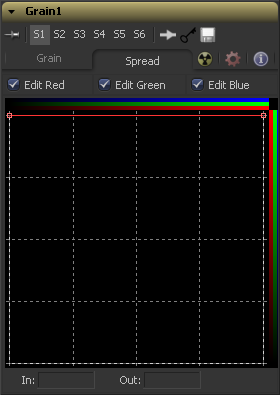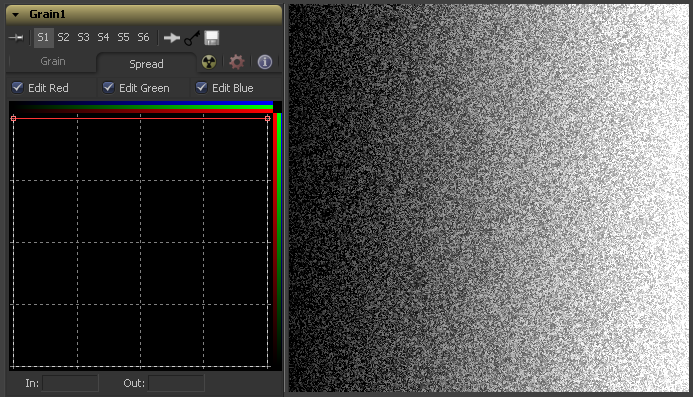Eyeon:Manual/Fusion 6/Grain
From VFXPedia
[ Main Manual Page ]
Contents |
Grain Tab
This slider determines the strength of the grain. A higher value increases visibility, making the grain more prevalent.
Separate Red, Green and Blue sliders are used to modify the strength of the effect on a per channel basis.
This slider controls the blurriness or fuzziness of the grain. Smaller values cause the grain to be more sharp or coarse.
This slider determines the size of the grain particles. Higher values increase the grain size.
This slider determines the density or amount of grain per area. Higher values cause the grain to appear more spaced out.
This slider adjusts the aspect of the grain so that it can be matched with anamorphic images.
When enabled, this checkbox will multiply the image by the alpha, clearing the black areas of any grain effect.
Spread Tab
Color spline curves are shaped using Spread splines. These curves define the strength of the grain.
The horizontal axis (left to right) represents the color values of the image, from black to white. The vertical axis (bottom to top) represents the power of the grain where bottom is none and top is the full amount set in the controls.
Separate Red, Green and Blue to enable the custom curves for each channel.More grain would appear in the blue channel than the red, and the green channel would receive the least. This curve mimics usual film responses.Right-clicking in the spline area will display a context menu containing options related to modifying spline curves. A complete description of the LUT editor control and its options can be found in the Tool Controls chapter of this manual.
This control gives direct editing of points on the curve by setting In/Out point values.
Spread Examples
In the default setting the Grain is applied evenly to the entire image as shown here. However film often shows a different amount of grain in the blacks, mids and whites.
Setting a bell shape like so is often a good starting point to create more realistic looking grain. Here we have a non-uniform distribution with different amounts of grain in the red, green and blue channel as well.
In both examples the grain's power has been over-exaggerated to show the effect a bit better.
Tips for Grain (edit)
EyeonTips:Manual/Fusion 6/Grain
| The contents of this page are copyright by eyeon Software. |




